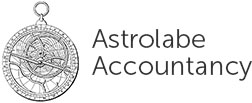Optimizing Your Website for Local Searches
 Local search engine optimization (SEO) is an important part of any online marketing strategy for traditional businesses which service a specific geographical area.
Local search engine optimization (SEO) is an important part of any online marketing strategy for traditional businesses which service a specific geographical area.
Local SEO works in much the same way as normal SEO, although there are some important differences to consider. Taking the time and trouble to optimize your website for local is essential due to the fact that about a fifth of desktop queries and more than half of mobile searches have local intent.
To capitalize on this fact, you’ll need to make sure that your website appears in local searches. Fortunately, local SEO is actually somewhat more straightforward than regular SEO, and this is largely because it is less competitive.
The first step to optimize for local searches is to include your regional keywords, such as the name of your town or city or any other areas which your business services, in the following areas of your website:
- Your website URLs (particularly for landing pages)
- Page titles
- Meta titles and descriptions
- h1 and h2 HTML heading tags
- Throughout the content of your site, provided it is relevant and done sparingly
Any local business should also have a footer which appears on every page of their website. The footer should contain your address, postal code and phone number. All information must be identical to that of any other online listings you have either on social networks or local directories. You should also provide a link to your Google Local listing.
Another key element of local SEO is to have appropriate landing pages. Your landing pages should include key words and phrases referring to your business’s location or service area – just be careful not to overdo it, since Google will penalize sites for over-optimization.
Businesses which have multiple service areas should ideally have separate landing pages for each one so that people will still be able to find you in Google when carrying out local searches. Each of your landing pages should provide relevant content, including information which is specific to the particular service area it applies to.
Other Online Resources for Local SEO
Optimizing your website is only one part of the local SEO process. There are many other important online resources which businesses should use to increase traffic and raise awareness. The most important ones, which any local business should use, include the following:
- Google Places. The most important resource of all for local businesses, even if you don’t have your own website, is Google Places. Claiming and verifying your business’s listing on Google Places will help enormously in your efforts to appear in local search results, and your business will also appear on Google Maps and mobile devices running Android.
- Bing Places. Microsoft’s version of Google Places might not be as popular, but it is still too important to ignore. It works in much the same way, allowing you to claim and verify your business’s physical location and have it appear in Bing Maps and on mobile devices running the Windows Phone operating system.
- Yelp. Yelp is an online urban guide providing local business listings. Yelp recently replaced the rather unsuccessful Apple Maps app for iPhones and iPads, and these devices now use data from Yelp to display local information with their included mapping apps. Given the enormous popularity of iPhones, the advantages of getting listed on Yelp should be obvious.
Local SEO is largely about getting listed in local online resources and optimizing your online content both on your website and other platforms in such a way that it makes references to location-relevant key phrases and regional names rather than using generic keywords.
It’s essential that your business listings be completely consistent across all of the platforms you use, particularly since it won’t be easy or practical to change them later on.
